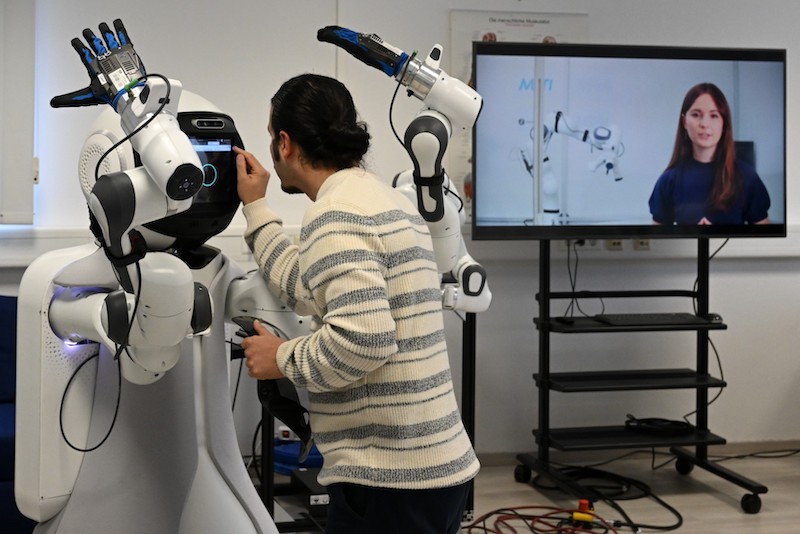“Garmy” is no different from other robots, as it is installed on a mobile base and is equipped with a robotic arm and a black screen on which two blue circles appear as its eyes… But this robot represents a dream for retired doctor Gunter Steinbach because it is able to diagnose diseases and perhaps provide appropriate treatments and care in the future.
Robots provide care for the elderly
Garmi was designed by dozens of researchers from the Munich Institute for Robotics and Machine Intelligence who specialize in Geriatronics, a new field in which new technologies are being used to advance geriatric medicine.
A division of the Technical University of Munich, the Institute established its Geriatronics unit in Garmisch-Partenkirchen, a ski resort with the highest proportion of elderly people in Germany.
This European country has one of the highest rates of aging in the world.
With the number of nursing vacancies expected to reach 670,000 in Germany by 2050, the researchers’ simple goal is to integrate robots into the work of health facilities and nursing homes, reducing the movement of doctors between these care centers.
Multiple missions
“We have ATMs to withdraw money, but imagine that one day, and within the same model, people will be able to undergo their medical examinations in a kind of technological center,” says the researcher and scientific officer of the laboratory, Abdul Jalil Nasseri (43 years).
Doctors will then be able to evaluate the results provided by the robot from a distance, in a step that is especially useful for people who live in remote locations.
These robots can perform several tasks, such as serving meals, opening a bottle of water, asking for help in the event of a patient falling, or launching a video chat with his family or friends.
Inside the lab, doctor Gunter Steinbach prepares to assess the progress of the robot, sitting at a desk equipped with three monitors and a remote control.
In another corner of the room, a researcher who assumes the role of the patient sits in front of the “Garmi” robot, which puts a stethoscope on the researcher’s chest, after receiving a command from Steinbach.

“Trust the robot
It is not yet known when “Garmi” will be available in the market, while the costs for its manufacture and use have not yet been determined.
Nasseri asserts that “Garni’s marketing is inevitable, as statistics show that its use is urgent,” adding, “As of 2030, we should be able to integrate this type of technology into our society.”
If the project comes to fruition one day, it is likely that Jarmi will appear for the first time in the corridors of the Zant-Wentzens Nursing Home in Garmisch-Partenkirchen, of which he is a partner in the project.
As soon as the idea was heard, a smile appeared on the face of Rohrer, 74, who was staying in the place. “There are tasks that the robot can accomplish, such as serving drinks or bringing food,” says the elderly woman, who is receiving care for her nails from the director of the foundation, in her thirties, Eva Piuskovic.
Piuskovik, whose staff shortage is one of its daily problems, considers that there is no magic cure for this crisis.
Abdul Jalil Nasseri’s team believes that one of the main challenges is not technical, medical or financial issues, but rather patients’ acceptance of robots.
